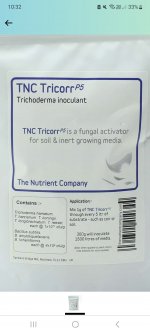
Hop Latent Viroid — TUMI Genomics
They are a great resource...
I can't comment on the dichlor. I don't know..Bleach solutions will neutralise it, that I do know. Both are oxidizers but I don't have literature on the dichlor. Bleach is cheap and available though and the gold standard so I just use that.



